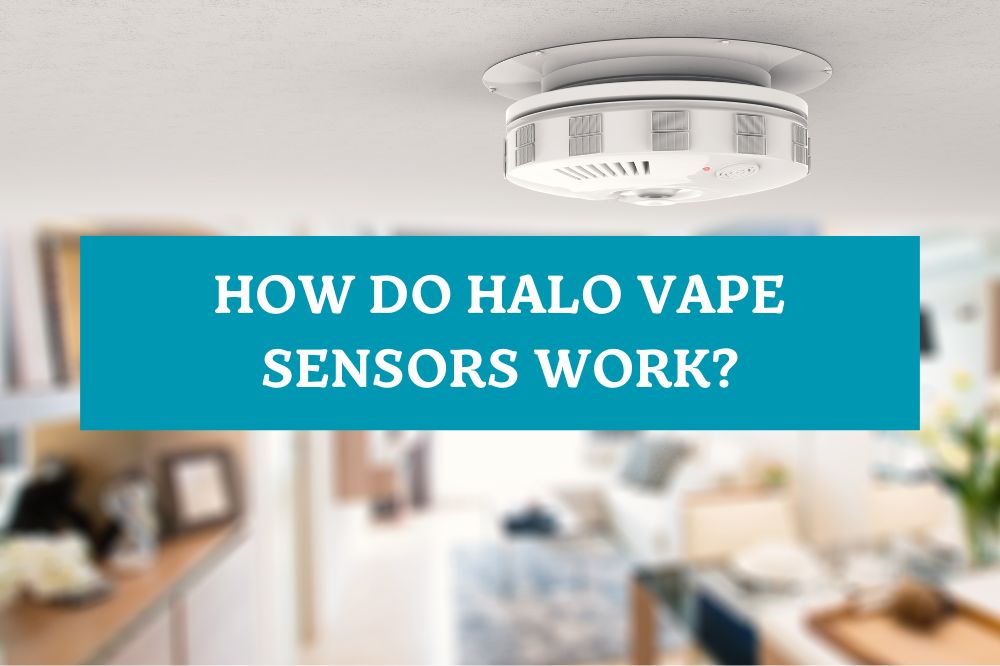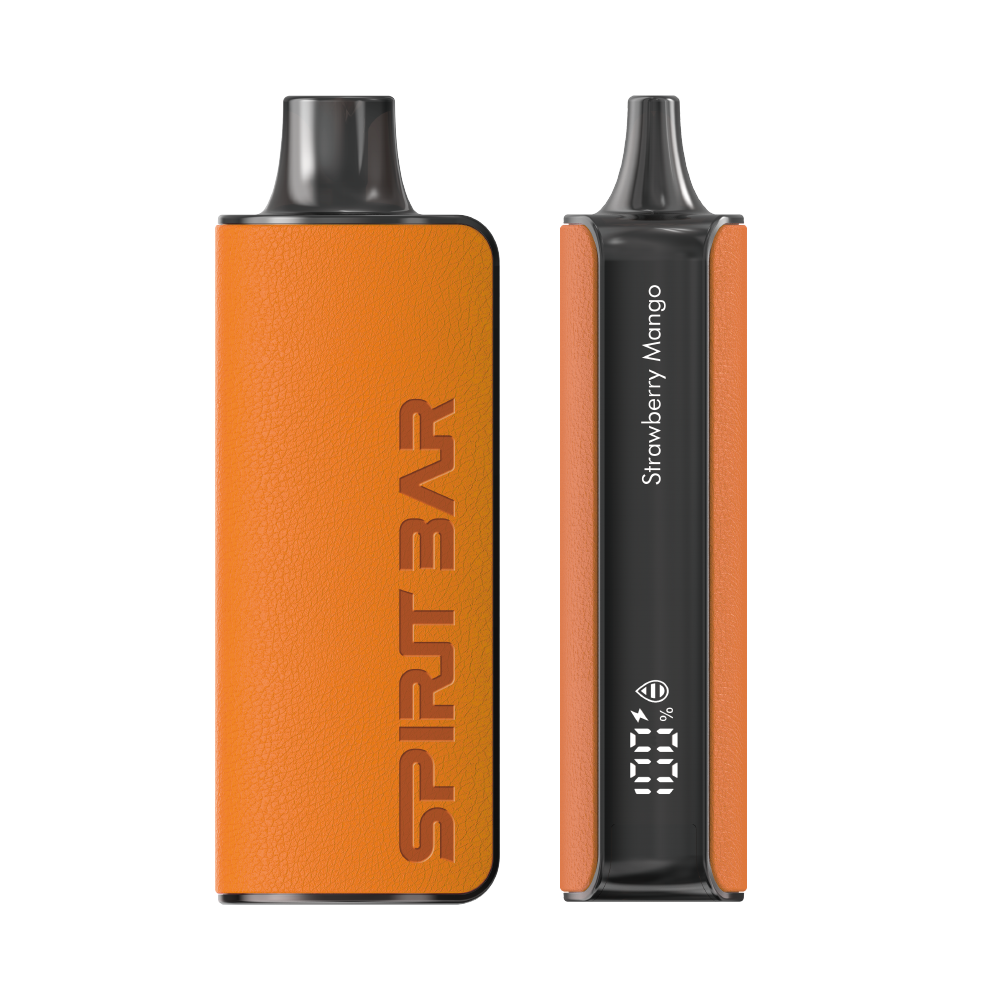How Do Halo Vape Sensors Work?

If you’re wondering how Halo vape sensors work, you’re not alone. These devices have become increasingly popular in recent years, as more and more people look for ways to monitor air quality and detect potentially harmful substances like secondhand smoke and vaping aerosols. In this article, we’ll take a closer look at how Halo vape sensors work and what makes them different from other types of air quality monitors.
At their core, Halo vape sensors are designed to detect the presence of vaping aerosols in the air. This is accomplished through a combination of advanced sensors and algorithms that are specifically calibrated to pick up on the unique chemical signatures of vaping aerosols. When a Halo sensor detects the presence of these aerosols, it triggers an alert that can be sent to a connected device like a smartphone or tablet.
One of the things that sets Halo vape sensors apart from other types of air quality monitors is their ability to differentiate between different types of vaping aerosols. For example, Halo sensors can detect the presence of THC in addition to traditional nicotine-based vaping aerosols. This is an important distinction, as THC-based vaping has become increasingly popular in recent years and can pose additional health risks. By detecting these types of aerosols, Halo sensors provide a more comprehensive picture of air quality and potential health hazards.
Understanding Vape Sensors
If you’re wondering how vape sensors work, you’ve come to the right place. Halo vape sensors use a Dynamic Vape Detection algorithm to automatically learn the environment and alert when vaping is detected. These sensors are equipped with 12 different sensors that can detect hundreds of combinations of substances in the air.
The Halo vape sensor is the only product that can alert and differentiate between vaping, vaping with THC, and intentionally masking vaping behavior by using aerosols to cover up vaping. This makes it an essential tool for schools, offices, and public spaces where vaping is prohibited.
When the sensor detects vaping, it sends an alert to the designated staff member via text or email. This allows for quick and discreet action to be taken to prevent further vaping.
SPIRITBAR Katana BP10000
- Slender, leather-textured body reminiscent of a katana handle for an authentic samurai feel
- Unique samurai-inspired e-liquid flavor - fruity yet not too sweet, with a luxurious, elegant aroma
- Powerful 650mAh rechargeable battery for extended vaping time
- Large 18ml e-liquid capacity and 10,000 puff capacity
- Advanced mesh coil and e-liquid & power display screens for optimal vaping experience
The special juice captures the essence of the samurai spirit with its rich, smoothly pulsating flavor that brings new satisfaction with every puff. The device's slender, leather-textured design evokes the grip of a samurai's katana, making this product a perfect choice for beginner vapors.
It’s important to note that Halo vape sensors do not record audio or video. They only detect substances in the air. This ensures the privacy of individuals in the space while still providing a safe and healthy environment.
Overall, Halo vape sensors are a reliable and effective tool for detecting vaping in public spaces. With their advanced technology and discreet alerts, they provide a low-risk environment for everyone.
Halo Vape Sensors: An Overview
If you’re wondering how Halo vape sensors work, you’ve come to the right place. These innovative sensors use a Dynamic Vape Detection algorithm to automatically learn the environment and alert when vaping is detected. Unlike other vape sensors, Halo can differentiate between vaping, vaping with THC, and intentionally masking vaping behavior by using aerosols to cover up vaping.
Halo vape sensors use multiple sensors to perform various detections. There are 12 sensors in total, which allows Halo to detect hundreds of combinations of substances, including smoke, THC, and other chemicals. Additionally, Halo can detect sound abnormalities like gunshots and shouting in areas where a camera cannot be placed, making it a versatile tool for monitoring safety and security.
One of the most significant benefits of Halo vape sensors is their ability to deliver safe, healthy, and comfortable environments that keep all personnel safe while saving money by efficiently running the HVAC system. By detecting vaping behavior, Halo can help prevent secondhand smoke exposure, which can be harmful to people’s health, especially in enclosed spaces.
Overall, Halo vape sensors are a reliable and effective tool for detecting vaping behavior, THC, and other chemicals. With their advanced detection capabilities and ability to differentiate between different substances, Halo vape sensors are an excellent choice for anyone looking to monitor safety and security in their environment.
How Halo Vape Sensors Work
If you’re wondering how Halo vape sensors work, you’re in the right place. The Halo Smart Sensor uses a Dynamic Vape Detection algorithm to automatically learn the environment and alert when vaping is detected. HALO is the only product that can alert and differentiate between vaping, vaping with THC, and intentionally masking vaping behavior by using aerosols to cover up vaping.
SPIRITBAR Jack’s Flask 9000 Puffs
- Stylish pirate flask-shaped body providing an exciting vaping experience
- Delivering up to 9000 puffs per device
- 20ml e-liquid capacity with 50mg nicotine strength for satisfying throat hit
- Specialized pirate-themed e-juice flavors for rich, swirling taste
- Premium mesh coil optimizes flavor profile for maximum vaping enjoyment
This disposable vape captures the daring spirit of the high seas with its flask styling and signature pirate e-juice flavors. The extraordinary battery life provides 9000 indulgent puffs for extended vaping pleasure. Live boldly and freely with the Jack's Flask - a legendary vaping experience fit for a pirate's adventures.
The Halo vape sensor uses a combination of sensors to detect vape. It has a total of 12 sensors that can detect a variety of substances in the air. These sensors include sensors for Carbon Dioxide (CO2), Particulate concentrations, Humidity, Volatile Organic Compounds (VOC), and Nitrogen Dioxide (NO2) in the air.
When a person exhales vape, the Halo sensor detects the vapor in the air and analyzes it using its advanced algorithm. The sensor is designed to differentiate between vaping and other substances that may be in the air. This means that the Halo sensor can accurately detect vaping even in environments where there may be other substances present.
Once the Halo sensor detects vaping, it sends a notification to the designated person or group. This notification can be sent via email, text message, or through a mobile app. This allows the designated person or group to take action and address the situation.
In summary, Halo vape sensors work by using a combination of sensors to detect vape in the air. The sensors analyze the vapor and differentiate it from other substances in the air. Once vaping is detected, the sensor sends a notification to the designated person or group, allowing them to take action.
Components of Halo Vape Sensors
Halo vape sensors are designed to detect vaping activity and provide alerts to designated personnel. These sensors are equipped with various components that work together to accurately detect vaping activity. Here are the main components of Halo vape sensors:
Airflow Sensors
Airflow sensors are a crucial component of Halo vape sensors. These sensors are designed to detect changes in the air flow caused by vaping activity. The sensors are highly sensitive and can detect even the slightest changes in the air flow. When vaping is detected, the sensors send an alert to designated personnel, allowing them to take appropriate action.
Temperature Sensors
Temperature sensors are another important component of Halo vape sensors. These sensors are designed to detect changes in temperature caused by vaping activity. The sensors are highly accurate and can detect even the slightest changes in temperature. When vaping is detected, the sensors send an alert to designated personnel, allowing them to take appropriate action.
Battery Level Sensors
Battery level sensors are also an essential component of Halo vape sensors. These sensors are designed to monitor the battery level of the sensors. When the battery level is low, the sensors send an alert to designated personnel, allowing them to replace the batteries before the sensors stop working.
In summary, Halo vape sensors are equipped with airflow sensors, temperature sensors, and battery level sensors. These components work together to accurately detect vaping activity and provide alerts to designated personnel.
The Role of Microcontrollers in Halo Vape Sensors
Halo vape sensors use microcontrollers to process data and detect vaping in real-time. Microcontrollers are small computers that are integrated into the sensors and designed to perform specific tasks. They are responsible for collecting data from the sensors and processing it to determine whether or not vaping is occurring in the monitored area.
The microcontrollers in Halo vape sensors are programmed with a dynamic vape detection algorithm. This algorithm is designed to learn the environment and differentiate between vaping, vaping with THC, and masking vaping behavior using aerosols. As a result, the sensors can accurately detect vaping and alert the appropriate personnel.
In addition to vape detection, microcontrollers in Halo vape sensors also play a role in monitoring air quality, temperature, humidity, and other environmental factors. The sensors collect data on these factors and send it to the microcontroller for processing. The microcontroller then uses this data to adjust the HVAC system to maintain a safe and comfortable environment.
The microcontrollers in Halo vape sensors are also responsible for communicating with other devices in the system. For example, they can connect to a VMS via an event management system and correlate the event time with the record time of a camera monitoring activities in and out of the room. They can also be connected to the VMS as a camera stream, and their sensor status can be directly recorded as a video stream.
SPIRITBAR Katana BP10000
- Slender, leather-textured body reminiscent of a katana handle for an authentic samurai feel
- Unique samurai-inspired e-liquid flavor - fruity yet not too sweet, with a luxurious, elegant aroma
- Powerful 650mAh rechargeable battery for extended vaping time
- Large 18ml e-liquid capacity and 10,000 puff capacity
- Advanced mesh coil and e-liquid & power display screens for optimal vaping experience
The special juice captures the essence of the samurai spirit with its rich, smoothly pulsating flavor that brings new satisfaction with every puff. The device's slender, leather-textured design evokes the grip of a samurai's katana, making this product a perfect choice for beginner vapors.
Overall, the microcontrollers in Halo vape sensors play a crucial role in detecting vaping and maintaining a safe and healthy environment. They are responsible for collecting and processing data, communicating with other devices, and adjusting the HVAC system to maintain optimal conditions.
Safety Features of Halo Vape Sensors
Halo vape sensors are designed to ensure the safety of individuals in a variety of settings, including schools, hospitals, and workplaces. Here are some of the safety features of Halo vape sensors:
Dynamic Vape Detection Algorithm
The Halo vape sensor uses a dynamic vape detection algorithm to automatically learn the environment and alert when vaping is detected. This algorithm is constantly learning and adapting to new environments, ensuring that it can accurately detect vaping in a variety of settings.
Panic Button
The Halo vape sensor comes equipped with a panic button that can be used to alert authorities in case of an emergency. This feature can be especially useful in schools or other public places where individuals may feel unsafe.
Gunshot Detection
In addition to detecting vaping, the Halo vape sensor can also detect gunshots. This feature can be incredibly useful in schools or other public places where gun violence is a concern.
Aggression Detection
The Halo vape sensor can also detect aggression, such as fights or other physical altercations. This feature can be especially useful in schools or other public places where violence is a concern.
Motion Detection
The Halo vape sensor can detect motion, which can be useful in detecting unauthorized individuals in restricted areas. This feature can be especially useful in hospitals or other secure facilities.
Occupancy Detection
The Halo vape sensor can detect occupancy, which can be useful in ensuring that areas are not overcrowded. This feature can be especially useful in schools or other public places where overcrowding can be a safety concern.
Tamper Detection
The Halo vape sensor can detect tampering, which can be useful in ensuring that the sensor is functioning properly. This feature can be especially useful in schools or other public places where vandalism can be a concern.
Customizable Safety Alerts
The Halo vape sensor allows for customizable safety alerts, which can be tailored to fit the needs of individual facilities. This feature can be especially useful in hospitals or other facilities where different areas may have different safety concerns.
Maintenance of Halo Vape Sensors
To ensure that your Halo vape sensors are functioning optimally, regular maintenance is required. Here are some tips to help you maintain your Halo vape sensors:
Cleaning
Cleaning your Halo vape sensors is essential to ensure that they continue to work effectively. You can use a soft cloth or a microfiber cloth to clean the sensors. Avoid using water or any cleaning solution as it may damage the sensors.
Calibration
Calibrating your Halo vape sensors is important to ensure that they are detecting vape and other substances accurately. You can calibrate your sensors by following the instructions provided in the user manual. It is recommended to calibrate your sensors at least once a month.
Firmware Updates
Firmware updates are essential to ensure that your Halo vape sensors are working with the latest features and improvements. You can check for firmware updates by logging into your Halo account and checking for updates. It is recommended to update your firmware at least once every six months.
Battery Replacement
The battery in your Halo vape sensors will eventually need to be replaced. The lifespan of the battery depends on usage and environmental conditions. You can check the battery level of your sensors by logging into your Halo account. If the battery level is low, it is recommended to replace the battery as soon as possible to ensure that your sensors continue to work effectively.
By following these maintenance tips, you can ensure that your Halo vape sensors continue to work effectively and accurately. Regular maintenance will also help to extend the lifespan of your sensors.
Troubleshooting Common Sensor Issues
If you’re having issues with your HALO vape sensor, don’t worry! Here are some common issues and how to troubleshoot them:
Sensor Not Detecting Vaping
If your sensor is not detecting vaping, make sure that it is placed in a location where vaping is likely to occur. The sensor should be placed near areas where people may vape, such as bathrooms or locker rooms. If the sensor is in the correct location and still not detecting vaping, check to make sure that it is properly calibrated. You may also want to check the sensor’s settings to ensure that it is set to detect vaping.
False Alarms
If your sensor is giving false alarms, there are a few things you can do to troubleshoot the issue. First, make sure that the sensor is not being triggered by other sources, such as cleaning products or air fresheners. If this is the case, try moving the sensor to a different location. You may also want to adjust the sensor’s sensitivity settings to reduce the likelihood of false alarms.
Sensor Not Connecting to Wi-Fi
If your sensor is not connecting to Wi-Fi, make sure that it is within range of your Wi-Fi network. You may also want to check the sensor’s settings to ensure that it is properly configured to connect to your network. If you’re still having issues, try resetting the sensor and connecting it to Wi-Fi again.
Sensor Not Powering On
If your sensor is not powering on, make sure that it is properly plugged in and that the power outlet is working. You may also want to check the sensor’s power cord to ensure that it is not damaged. If you’re still having issues, try resetting the sensor by unplugging it and plugging it back in.
By following these troubleshooting tips, you should be able to resolve most common issues with your HALO vape sensor. If you’re still having issues, don’t hesitate to contact HALO support for further assistance.
Future of Vape Sensors
As vaping becomes more widespread, the need for reliable and effective vape sensors is increasing. Fortunately, companies like HALO are working to improve their technology and create better solutions for detecting vaping in public spaces.
One potential future development for vape sensors is the ability to detect specific substances within the vapor. HALO’s current technology can differentiate between vaping and other aerosols, but it cannot yet distinguish between different types of vaping substances. In the future, sensors may be able to detect the presence of THC, nicotine, or other chemicals commonly used in vaping.
Another potential development is the integration of vape sensors with other types of sensors, such as smoke detectors or air quality monitors. This could provide a more comprehensive picture of the air quality in a given space, allowing for better monitoring and control of potential health hazards.
Finally, as technology continues to advance, vape sensors may become more affordable and accessible, making it easier for schools, businesses, and other organizations to implement them as part of their safety protocols. This could lead to a significant reduction in the number of people exposed to harmful secondhand vapor, ultimately improving public health and safety.
Overall, the future of vape sensors looks promising, with continued advancements in technology and increased accessibility leading to better detection and control of vaping in public spaces.








